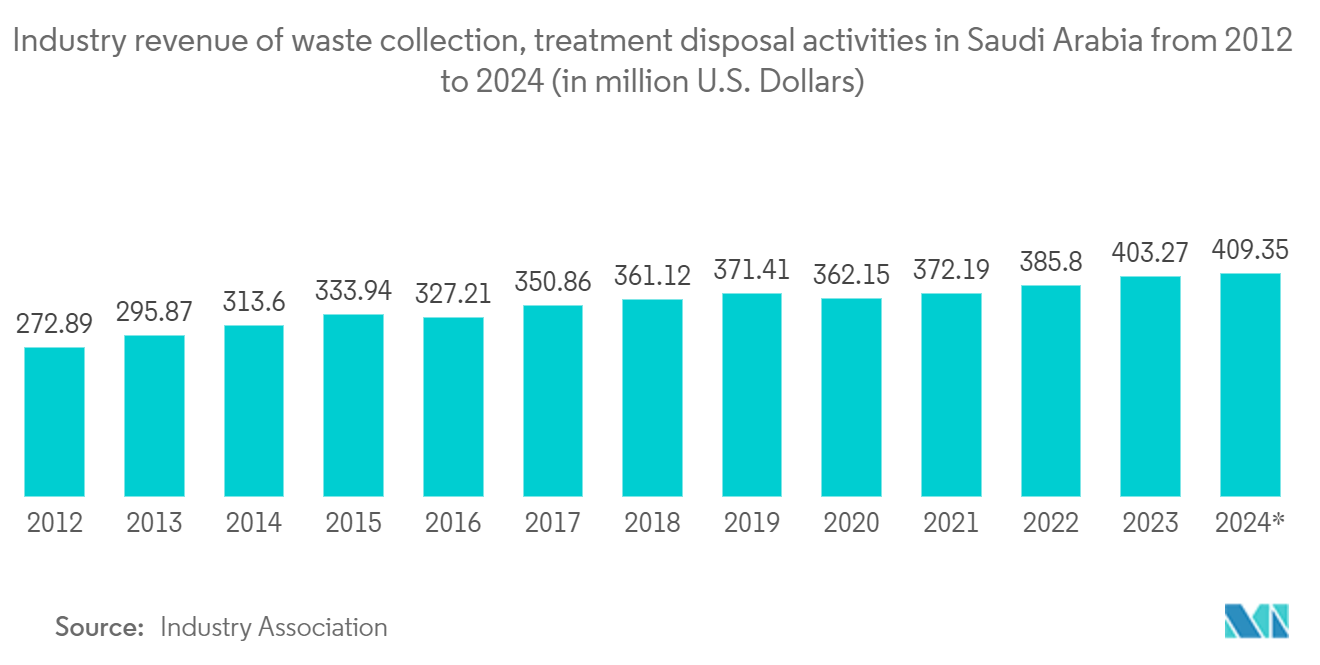Market Trends of GCC Industrial Waste Management Industry
Saudi Arabia is Expected to Witness a Significant Growth in the Forecasting Period
- Saudi Arabia has been focusing on environmental sustainability, and there are regulations in place to manage industrial waste. The government's commitment to addressing environmental challenges is likely to drive advancements in waste management practices. Government enforcement requires all industrial facilities to contract with qualified industrial waste management companies to collect and treat their generated waste. As part of Saudi Vision 2030, the National Center for Waste Management (NCWM) was established to unify the waste sector roles, standards, and requirements and streamline incentives to attract investments to the sector.
- 85% of industrial waste in KSA is targeted to be excluded from landfills by 2035, where the current exclusion from landfills is less than 50%. The National Industrial Development and Logistics Program aims to transform the Kingdom into a leading industrial powerhouse and a global logistics hub. Multiple large-scale industrial cities are under construction in Saudi Arabia.
- Land for lease starts from USD 0.26 per sqm/year. HRDF covers 30-50% of Saudi employees' monthly salaries (an additional 10% for females) for two years, provided that it does not exceed USD 4,000. 100% foreign direct ownership allowed. A fully competitive investment environment is enforced in KSA at the highest regulatory and legal levels.

Construction and Demolition Segment Occupying the Largest Market Share
- Due to the highly variable nature of demolition, construction, and excavation waste, each plant CDE design is built as per the specific requirements of the project. For construction and demolition waste, an individual approach is necessary for each recycling plant to different levels of contamination, fines content, and variations in input material: excavation waste, railway ballast, etc. The Gulf Cooperation Countries (GCC) produce around 120 million tons of waste annually, with 55% of that being construction and demolition (C&D) waste. It's about 1.2 to 2.7 kg per capita daily.
- The construction and demolition wastes account for 42% of the total weight of the non-hazardous solid wastes generated in Abu Dhabi. Building materials, such as insulation, nails, electrical wire, and rebar, as well as waste arising from the preparation of the site, such as dredging materials, tree stumps, and rubble, shall be included. The construction and development activities and associated C&D waste production may continue to rise in the region. Hence, if not managed properly, the dumping of C&D may become uncontrolled. This will not only cause a negative environmental impact on soil, water, air, and the surrounding ecosystem but also result in the depletion of finite resources.
- The Abu Dhabi Waste Management Center (Tadweer) opened a new facility to recycle construction and demolition waste in Ghayathi in the Emirate’s Al Dhafra region. The new facility, located close to the Ruwais oil fields and the United Arab EmiratesSaudi Arabia border, could help ease the pressure on the Al Dhafra landfill, which is expected to receive construction and demolition waste in the range of 60,00070,000 metric tons per month, with an average daily flow of 1,500,000 metric tons. The opening of the Ghayati recycling plant is in line with Abu Dhabi's strategic plan to establish a world-class waste management system and will place the United Arab Emirates at the forefront of innovation when it comes to recycling.


